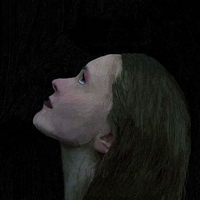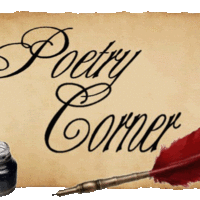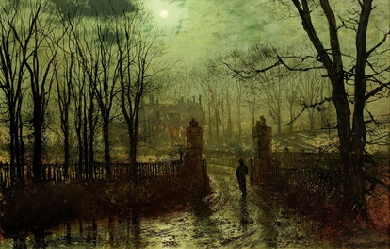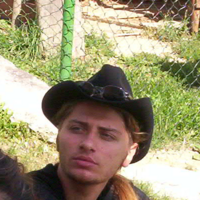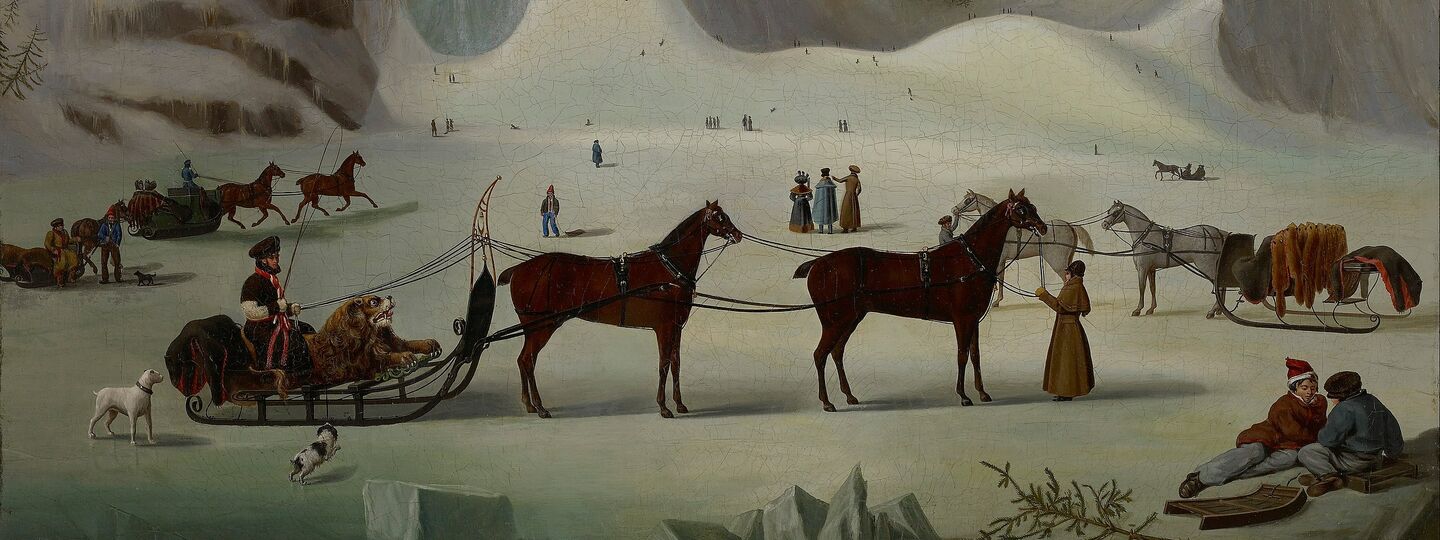
Info
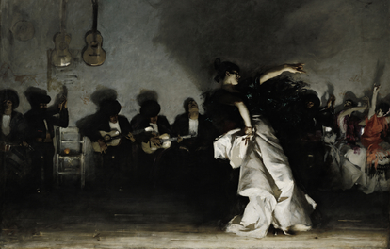
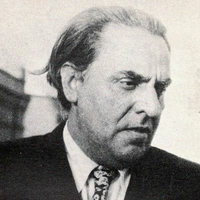
Pedro Garfias Zurita (Salamanca, 20 de mayo de 1901 – Monterrey, México, 9 de agosto de 1967) fue un poeta español de la vanguardia perteneciente a la Generación del 27. Su infancia y juventud transcurrieron en Sevilla y Córdoba. Desde 1918 vivió en Madrid la bohemia literaria al llegar a esta capital para estudiar Leyes, carrera que nunca terminó. Al término de la guerra se exilió, pasó a un campo de concentración francés y luego, en abril de 1939, a Inglaterra, donde vivió en un castillo y empezó a alcoholizarse. Allí compuso su “poema bucólico con intermedios de llanto” titulado Primavera en Eaton Hastings, libro publicado al llegar, el 13 de junio de 1939, al puerto de Veracruz (México), evacuado a bordo del buque francés Sinaia como parte del primer contingente de mil seiscientos veinte republicanos expulsados de su patria. Cantor de Stalin como su prologuista Juan Rejano y demás demócratas defensores de la Cultura, acabó refugiándose en el periodismo y en el alcohol.

I was made an older sister when i turned 3. My parents divorced when i was 6. I used to cut my wrists when things got bad(started at age 10). I have suicidal thoughts every now and again, but my poetry, my skateboarding, my drawings, and mainly my music help me along the way. Thats why im still here. Anyone can do it...you just got to believe that you're worth it (:
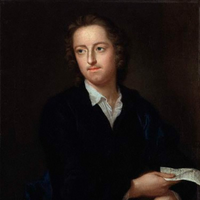
Thomas Gray (26 December 1716– 30 July 1771) was an English poet, letter-writer, classical scholar and professor at Pembroke College, Cambridge. He is widely known for his Elegy Written in a Country Churchyard, published in 1751. Early life and education Thomas Gray was born in Cornhill, London. His father, Philip Gray, was a scrivener and his mother, Dorothy Antrobus, was a milliner He was the fifth of 12 children, and the only child of Philip and Dorothy Gray to survive infancy. He lived with his mother after she left his abusive and mentally unwell father. Gray’s mother paid for him to go to Eton College where two of his uncles worked: Robert and William Antrobus. Robert became Gray’s first teacher and helped inspire in Gray a love for botany and observational science. Gray’s other uncle, William, became his tutor. He recalled his schooldays as a time of great happiness, as is evident in his Ode on a Distant Prospect of Eton College. Gray was a delicate and scholarly boy who spent his time reading and avoiding athletics. He lived in his uncle’s household rather than at college. He made three close friends at Eton: Horace Walpole, son of the Prime Minister Robert Walpole; Thomas Ashton, and Richard West, son of another Richard West who was briefly Lord Chancellor of Ireland. The four prided themselves on their sense of style, sense of humour, and appreciation of beauty. They were called the “quadruple alliance.” In 1734 Gray went up to Peterhouse, Cambridge. He found the curriculum dull. He wrote letters to friends listing all the things he disliked: the masters ("mad with Pride") and the Fellows ("sleepy, drunken, dull, illiterate Things"). Intended by his family for the law, he spent most of his time as an undergraduate reading classical and modern literature, and playing Vivaldi and Scarlatti on the harpsichord for relaxation. In 1738 he accompanied his old school-friend Walpole on his Grand Tour of Europe, possibly at Walpole’s expense. The two fell out and parted in Tuscany, because Walpole wanted to attend fashionable parties and Gray wanted to visit all the antiquities. They were reconciled a few years later. It was Walpole who later helped publish Gray’s poetry. When Gray sent his most famous poem, “Elegy,” to Walpole, Walpole sent off the poem as a manuscript and it appeared in different magazines. Gray then published the poem himself and received the credit he was due Writing and academia Gray began seriously writing poems in 1742, mainly after his close friend Richard West died. He moved to Cambridge and began a self-imposed programme of literary study, becoming one of the most learned men of his time, though he claimed to be lazy by inclination. Gray was a brilliant bookworm, a quiet, abstracted, dreaming scholar, often afraid of the shadows of his own fame. He became a Fellow first of Peterhouse, and later of Pembroke College, Cambridge. Gray moved to Pembroke after the students at Peterhouse played a prank on him. Gray spent most of his life as a scholar in Cambridge, and only later in his life did he begin traveling again. Although he was one of the least productive poets (his collected works published during his lifetime amount to fewer than 1,000 lines), he is regarded as the foremost English-language poet of the mid-18th century. In 1757, he was offered the post of Poet Laureate, which he refused. Gray was so self-critical and fearful of failure that he published only thirteen poems during his lifetime. He once wrote that he feared his collected works would be “mistaken for the works of a flea”. Walpole said that “He never wrote anything easily but things of Humour.” Gray came to be known as one of the “Graveyard poets” of the late 18th century, along with Oliver Goldsmith, William Cowper, and Christopher Smart. Gray perhaps knew these men, sharing ideas about death, mortality, and the finality and sublimity of death. In 1762, the Regius chair of Modern History at Cambridge, a sinecure which carried a salary of £400, fell vacant after the death of Shallet Turner, and Gray’s friends lobbied the government unsuccessfully to secure the position for him. In the event, Gray lost out to Lawrence Brockett, but he secured the position in 1768 after Brockett’s death. “Elegy” masterpiece It is believed that Gray began writing his masterpiece, the Elegy Written in a Country Churchyard, in the graveyard of St Giles parish church in Stoke Poges, Buckinghamshire, in 1742. After several years of leaving it unfinished, he completed it in 1750 (see Elegy for the form). The poem was a literary sensation when published by Robert Dodsley in February 1751 (see 1751 in poetry). Its reflective, calm and stoic tone was greatly admired, and it was pirated, imitated, quoted and translated into Latin and Greek; it is still one of the most popular and most frequently quoted poems in the English language. In 1759 during the Seven Years War, before the Battle of the Plains of Abraham, British General James Wolfe is said to have recited it to his officers, adding: “Gentlemen, I would rather have written that poem than take Quebec tomorrow”. The Elegy was recognised immediately for its beauty and skill. It contains many phrases which have entered the common English lexicon, either on their own or as quoted in other works. These include: “The Paths of Glory” (the title of a 1957 anti-war movie about World War I, produced by and starring Kirk Douglas, and directed by Stanley Kubrick, based on a novel of the same name by Humphrey Cobb). “Celestial fire” “Some mute inglorious Milton” “Far from the Madding Crowd” (the title of a novel by Thomas Hardy, filmed several times) “The unlettered muse” “Kindred spirit” “Elegy” contemplates such themes as death and afterlife. These themes foreshadowed the upcoming Gothic movement. It is suggested that perhaps Gray found inspiration for his poem by visiting the gravesite of his aunt, Mary Antrobus. The aunt was buried at the graveyard by the St. Giles’ churchyard, which he and his mother would visit. This is the same gravesite where Gray himself was later buried. Gray also wrote light verse, including Ode on the Death of a Favourite Cat, Drowned in a Tub of Gold Fishes, a mock elegy concerning Horace Walpole’s cat. After setting the scene with the couplet “What female heart can gold despise? What cat’s averse to fish?”, the poem moves to its multiple proverbial conclusion: “a fav’rite has no friend”, "[k]now one false step is ne’er retrieved" and “nor all that glisters, gold”. (Walpole later displayed the fatal china vase (the tub) on a pedestal at his house in Strawberry Hill.) Gray’s surviving letters also show his sharp observation and playful sense of humour. He is well known for his phrase, “where ignorance is bliss, ’tis folly to be wise.” The phrase, from Ode on a Distant Prospect of Eton College, is possibly one of the most misconstrued phrases in English literature. Gray is not promoting ignorance, but is reflecting with nostalgia on a time when he was allowed to be ignorant, his youth (1742). It has been asserted that the Ode also abounds with images which find “a mirror in every mind”. This was stated by Samuel Johnson who said of the poem, “I rejoice to concur with the common reader... The Church-yard abounds with images which find a mirror in every mind, and with sentiments to which every bosom returns an echo”. Indeed, Gray’s poem follows the style of the mid-century literary endeavor to write of “universal feelings.” Samuel Johnson also said of Gray that he spoke in “two languages”. He spoke in the language of “public” and “private” and according to Johnson, he should have spoken more in his private language as he did in his “Elegy” poem. Forms Gray considered his two Pindaric odes, The Progress of Poesy and The Bard, as his best works. Pindaric odes are to be written with fire and passion, unlike the calmer and more reflective Horatian odes such as Ode on a distant Prospect of Eton College. The Bard tells of a wild Welsh poet cursing the Norman king Edward I after his conquest of Wales and prophesying in detail the downfall of the House of Plantagenet. It is melodramatic, and ends with the bard hurling himself to his death from the top of a mountain. When his duties allowed, Gray travelled widely throughout Britain to places such as Yorkshire, Derbyshire, Scotland and most notably the Lake District (see his Journal of a Visit to the Lake District in 1769) in search of picturesque landscapes and ancient monuments. These elements were not generally valued in the early 18th century, when the popular taste ran to classical styles in architecture and literature, and most people liked their scenery tame and well-tended. Some have seen Gray’s writings on this topic, and the Gothic details that appear in his Elegy and The Bard as the first foreshadowing of the Romantic movement that dominated the early 19th century, when William Wordsworth and the other Lake poets taught people to value the picturesque, the sublime, and the Gothic. Gray combined traditional forms and poetic diction with new topics and modes of expression, and may be considered as a classically focused precursor of the romantic revival. Gray’s connection to the Romantic poets is vexed. In the prefaces to the 1800 and 1802 editions of Wordsworth’s and Samuel Taylor Coleridge’s Lyrical Ballads, Wordsworth singled out Gray’s “Sonnet on the Death of Richard West” to exemplify what he found most objectionable in poetry, declaring it was “Gray, who was at the head of those who, by their reasonings, have attempted to widen the space of separation betwixt prose and metrical composition, and was more than any other man curiously elaborate in the structure of his own poetic diction.” Gray wrote in a letter to West, that “the language of the age is never the language of poetry.” Death Gray died on 30 July 1771 in Cambridge, and was buried beside his mother in the churchyard of St Giles’ church in Stoke Poges, the setting for his famous Elegy. His grave can still be seen there. Honours Gray’s biographer William Mason erected a monument to him, designed by John Bacon the Elder, in Poets’ Corner at Westminster Abbey in 1778. John Penn “of Stoke” had a memorial to Gray built near St Giles’ churchyard and engraved with extracts from the “Elegy”. A plaque in Cornhill marks his birthplace. References Wikipedia—https://en.wikipedia.org/wiki/Thomas_Gray
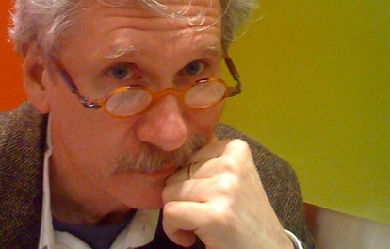
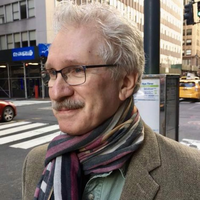
Reginald Gibbons (born 1947) is an American poet, fiction writer, translator, literary critic, and Professor of English and Classics at Northwestern University and Director of the Center for the Writing Arts there. Gibbons has published numerous books, as well as poems, short stories, essays and reviews in journals and magazines, has held Guggenheim Foundation and NEA fellowships in poetry and a research fellowship from the Center for Hellenic Studies in Washington D.C. He has won the Anisfield-Wolf Book Award, the Carl Sandburg Prize, the Folger Shakespeare Library’s O. B. Hardison, Jr. Poetry Prize, and other honors, among them the inclusion of his work in Best American Poetry and Pushcart Prize anthologies. His book Creatures of a Day was a finalist for the 2008 National Book Award for poetry. He attended public school in Spring Branch (at that time, outside Houston, Texas; now incorporated into the city), Princeton University (BA Spanish and Portuguese), and Stanford University (MA in English and Creative Writing; PhD in Comparative Literature). Before moving to Northwestern University, he taught creative writing at Princeton and Columbia. At Northwestern, he was the editor of TriQuarterly magazine from 1981 to 1997, and co-founded TriQuarterly Books (after 1997, an imprint of Northwestern University Press). As the editor of TriQuarterly, he edited or co-edited the special issues Chicago (1984), From South Africa: New Writing, Photography and Art (1987), A Window on Poland (1983), Prose from Spain (1983), New Writing from Mexico (1992), and others, as well as many general issues of the magazine. He edited two works of William Goyen (1915-1983): the 50th Anniversary edition of The House of Breath and the Goyen’s posthumously published second novel, Half a Look of Cain (both published by Northwestern University Press). In 1989, he was one of a group of co-founders of the Guild Literary Complex (Chicago), a literary presenting organization, where he continues to volunteer, and he is a member of the large team that is creating the American Writers Museum (Chicago; opening in 2017). Career * Lecturer in creative writing, Princeton University (Princeton, NJ), 1976-1980 * Lecturer in creative writing, Columbia University School of General Studies, 1980-81 * Professor of English, Northwestern University (Evanston, IL), 1981- * Editor of TriQuarterly magazine, 1981-1997 * Core faculty member of MFA Program for Writers, Warren Wilson College (Asheville, NC), 1989-2011 * Co-founder and member of the board of directors, Guild Complex, 1989- * Member, National Advisory Council and Content Leadership Team, American Writers Museum, 2012- Poetry * Roofs Voices Roads. (Quarterly Review of Literature, 1979). * The Ruined Motel. (Houghton, 1981). * Saints. (Persea Books, 1986). * Maybe It Was So. (University of Chicago Press, 1991). ISBN 978-0-226-29056-0 * Sparrow: New and Selected Poems. (LSU Press, 1997). ISBN 978-0-8071-2232-7 * Homage to Longshot O’Leary: Poems. (Holy Cow! Press, 1999). * It’s Time: Poems. (LSU Press, 2002). ISBN 978-0-8071-2815-2 * Creatures of a Day: Poems. (LSU Press, 2008). ISBN 978-0-8071-3318-7 * Desde una barca de papel (Poemas 1981-2008). (Littera Libros (Villanueva de la Serena, SPAIN), 2009. (Bilingual edition) * Slow Trains Overhead: Chicago Poems and Stories. (University of Chicago Press, 2010). ISBN 978-0-226-29058-4 * L’abitino blue. (Gattomerlino (Rome, ITALY). (Bilingual edition) * Last Lake. (University of Chicago Press, 2016. ISBN 978-0-226-41745-5 Fiction * Sweetbitter: A Novel. (LSU Press, 2003). ISBN 978-0-8071-2871-8 * Five Pears or Peaches. (Broken Moon Press, 1991). * Orchard in the Street. (BOA Editions, Ltd, forthcoming 2017). Other Books * Sophocles, Selected Poems: Odes and Fragments (Princeton University Press, 2008.) Translated and Introduced by Reginald Gibbons. ISBN 978-0-691-13024-8 * How Poems Think (University of Chicago Press, 2015). ISBN 978-0-226-27800-1 * Sophocles, Antigone (Oxford University Press, 2007). Translated by Reginald Gibbons and Charles Segal. ISBN 978-0-19514310-2 * Goyen: Autobiographical Essays, Notesbooks, Evocations, Interviews, by William Goyen (University of Texas Press, 2007. ISBN 978-0-292-72225-5 * The Complete Sophocles, Volume I: The Theban Plays (Oxford University Press, 2011.) Antigone translated by Reginald Gibbons and Charles Segal. ISBN 978-0-19-538880-0 * The Complete Euripides, Volume IV: Bacchae and Other Plays (Oxford University Press, 2009.) Bacchae translated by Reginald Gibbons and Charles Segal. ISBN 978-0-19-537340-0 * New Writing from Mexico, edited by Reginald Gibbons. TriQuarterly Books, 1992. * Thomas McGrath: Life and the Poem, edited by Reginald Gibbons and Terrence Des Press. (University of Illinois Press, 1992. ISBN 0-252-06177-2 References Wikipedia—https://en.wikipedia.org/wiki/Reginald_Gibbons
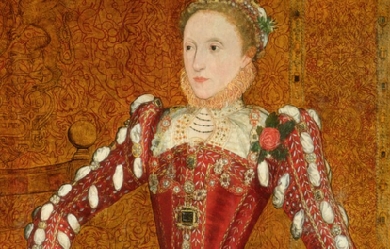
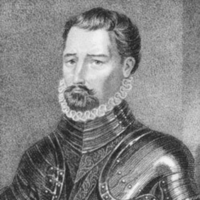
George Gascoigne (c. 1535– 7 October 1577) was an English poet, soldier and unsuccessful courtier. He is considered the most important poet of the early Elizabethan era, following Sir Thomas Wyatt and Henry Howard, Earl of Surrey and leading to the emergence of Philip Sidney. He was the first poet to deify Queen Elizabeth I, in effect establishing her cult as a virgin goddess married to her kingdom and subjects. His most noted works include A Discourse of the Adventures of Master FJ (1573), an account of courtly sexual intrigue and one of the earliest English prose fictions; The Supposes, (performed in 1566, printed in 1573), an early translation of Ariosto and the first comedy written in English prose, which was used by Shakespeare as a source for The Taming of the Shrew; the frequently anthologised short poem “Gascoignes wodmanship” (1573); and “Certayne Notes of Instruction concerning the making of verse or ryme in English” (1575), the first essay on English versification. Early life The eldest son of Sir John Gascoigne of Cardington, Bedfordshire, Gascoigne was educated at Trinity College, Cambridge, and on leaving the university is supposed to have joined the Middle Temple. He became a member of Gray’s Inn in 1555. He has been identified without much show of evidence with a lawyer named Gastone who was in prison in 1548 under very discreditable circumstances. There is no doubt that his escapades were notorious, and that he was imprisoned for debt. George Whetstone says that Sir John Gascoigne disinherited his son on account of his follies, but by his own account he was obliged to sell his patrimony to pay the debts contracted at court. He was M.P. for Bedford in 1557–1558 and 1558–1559, but when he presented himself in 1572 for election at Midhurst he was refused on the charges of being “a defamed person and noted for manslaughter”, “a common Rymer and a deviser of slaunderous Pasquelles”, “a notorious rufilanne”, and a constantly indebted atheist. His poems, with the exception of some commendatory verses, were not published before 1572, but they may have circulated in manuscript before that date. He tells us that his friends at Gray’s Inn importuned him to write on Latin themes set by them, and that two of his plays were acted there. He repaired his fortunes by marrying the wealthy widow of William Breton, thus becoming stepfather to the poet, Nicholas Breton. In 1568 an inquiry into the disposition of William Breton’s property with a view to the protection of the children’s rights was instituted before the Lord Mayor, but the matter was probably settled in a friendly manner, for Gascoigne continued to hold the Breton Walthamstow estate, which he had from his wife, until his death. Plays at Grays Inn Gascoigne translated two plays performed in 1566 at Grays Inn, the most aristocratic of the Renaissance London Inns of Court: the prose comedy Supposes based on Ariosto’s Suppositi, and Jocasta, a tragedy in blank verse which is said to have derived from Euripides’s Phoenissae, but appears more directly as a translation from the Italian of Lodovico Dolce’s Giocasta. Hundredth Sundry Flowres (1573) and Posies of Gascoigne (1575) Gascoigne’s best known and controversial work was originally published in 1573 under the title A Hundredth Sundry Flowres bound up in one small Posie. Gathered partly (by translation) in the fyne outlandish Gardens of Euripides, Ovid, Petrarch, Ariosto and others; and partly by Invention out of our owne fruitfull Orchardes in Englande, Yelding Sundrie Savours of tragical, comical and moral discourse, bothe pleasaunt and profitable, to the well-smelling noses of learned readers, by London printer Richarde Smith. The book purports to be an anthology of courtly poets, gathered and edited by Gascoigne and two other editors known only by the initials “H.W.” and “G.T.” The book’s content is throughout suggestive of courtly scandal, and the aura of scandal is skillfully elaborated through the effective use of initials and posies—Latin or English tags supposed to denote particular authors—in place of the real names of actual or alleged authors. For reasons that are still unclear, the book was republished, with certain additions and deletions, two years later under the alternative title, The Posies of George Gascoigne, Esquire. The new edition contains three new dedicatory epistles, signed by Gascoigne, which apologize for some offense that the original edition had caused and effect to transfer sole responsibility for the book’s content to Gascoigne himself. At war in the Netherlands When Gascoigne sailed as a soldier of fortune to the Low Countries in 1572, his ship was driven by stress of weather to Brielle, which luckily for him had just fallen into the hands of the Dutch. He obtained a captain’s commission, and took an active part in the campaigns of the next two years including the Middelburg siege, during which he acquired a profound dislike of the Dutch, and a great admiration for William of Orange, who had personally intervened on his behalf in a quarrel with his colonel, and secured him against the suspicion caused by his clandestine visits to a lady at the Hague. Taken prisoner after the evacuation of Valkenburg by English troops during the Siege of Leiden, he was sent to England in the autumn of 1574. He dedicated to Lord Grey de Wilton the story of his adventures, The Fruites of Warres (printed in the edition of 1575) and Gascoigne’s Voyage into Hollande. In 1575 he had a share in devising the masques, published in the next year as The Princely Pleasures at the Courte at Kenelworth, which celebrated the queen’s visit to the Earl of Leicester. At Woodstock in 1575 he delivered a prose speech before Elizabeth, and was present at a reading of the Pleasant Tale of Hemetes the Hermit, a brief romance, probably written by the queen’s host, Sir Henry Lee. At the queen’s annual gift exchange with members of her court the following New Year’s, Gascoigne gave her a manuscript of Hemetes which he had translated into Latin, Italian, and French. Its frontispiece shows the Queen rewarding the kneeling poet with an accolade and a purse; its motto, “Tam Marti, quam Mercurio,” indicates that he will serve her as a soldier, as a scholar-poet, or as both. He also drew three emblems, with accompanying text in the three other languages. He also translated Jacques du Fouilloux’s La Venerie (1561) into English as The Noble Arte of Venerie or Hunting (1575) which was printed together with George Turberville’s The Book of Falconrie or Hawking and is thus sometimes misattributed to Turberville though in fact it was a work by Gascoigne. Later writings and influences Most of his works were published during the last years of his life after his return from the wars. He died 7 October 1577 at Walcot Hall, Barnack, near Stamford, where he was the guest of George Whetstone and was buried in the Whetstone family vault at St John the Baptist’s Church, Barnack. Gascoigne’s theory of metrical composition is explained in a short critical treatise, “Certayne Notes of Instruction concerning the making of verse or ryme in English, written at the request of Master Edouardo Donati,” prefixed to his Posies (1575). He acknowledged Chaucer as his master, and differed from the earlier poets of the school of Surrey and Wyatt chiefly in the greater smoothness and sweetness of his verse. Ancestry References Wikipedia—https://en.wikipedia.org/wiki/George_Gascoigne
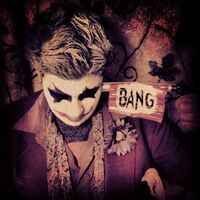
I've always enjoyed poetry and I started on Shel Silverstein when I was young. Poe became a huge inspiration later on. Other inspirations include Alvin Schwartz (writer) and Stephen Gammell (illustrator) who worked on the Scary Stories to Tell in the Dark book series. Various Hiphop artists played an integral part as well as Kevin Smith:screenwriter, actor, film producer, and director, as well as a popular comic book writer, author, comedian/raconteur, and podcaster, not only do I appreciate his work I appreciate his personable stage presence and personality. I've always loved wordplay and appreciated intricate ways just words can make you feel and give you a visual for what the writer is communicating to the reader. It's incredible how a combination of words can form something so amazing and memorable!! I also do music with my group Wicked Tyme, check us out via these links! http://www.facebook.com/WTthirteenoclock?ref=ts&fref=ts http://m.soundcloud.com/johnyarson https://mobile.twitter.com/WickedTyme http://www.reverbnation.com/WTthirteenoclock http://www.youtube.com/user/WTthirteenoclock

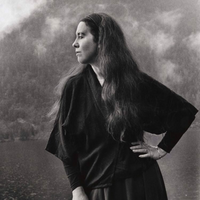
Tess Gallagher (born July 21, 1943 in Port Angeles, Washington) is an American poet, essayist, and short story writer. She attended the University of Washington, where she studied creative writing with Theodore Roethke and later Nelson Bentley as well as David Wagoner and Mark Strand. Her honors include a fellowship from the Guggenheim Foundation, two National Endowment for the Arts awards, the The Maxine Cushing Gray Endowed Libraries Visiting Writers Fellowship (University of Washington), and the Elliston Award for “best book of poetry published by a small press” for the collection Instructions to the Double (1976). Her late husband, Raymond Carver, encouraged her to write short stories, some of which were collected in The Lover of Horses (1987) and At the Owl Woman Saloon (1996). Her book Moon Crossing Bridge is a collection of love poems written for Carver after his death from cancer in 1988. “Moon Crossing Bridge” was followed in 2002 by the collection “Dear Ghosts.” Gallagher has taught at many colleges, most recently at Bucknell University and Whitman College. In December 2006, she published an essay in The Sun Magazine, titled “Instead of Dying”, about alcoholism and Raymond Carver’s having maintained his sobriety. The essay is an adaptation of a talk she initially delivered at the Welsh Academy’s Academi Intoxication Conference in 2006. The first lines read: “Instead of dying from alcohol, Raymond Carver chose to live. I would meet him five months after this choice, so I never knew the Ray who drank, except by report and through the characters and actions of his stories and poems.” Distant Rain, published in 2006, is a conversation between Tess and Jakuchō Setouchi, a Buddhist nun from Kyoto, which took place after Carver’s death.

I'm a stay at home,keep to myself kinda person, I keep my sadness and thoughts on Papper cause some times it hurts being a woman is easy but dealing with pain and hurt well that's something I try to not focus on.your more then welcome to read just ask you not to go else were with it cause money could never replace most of it thank you
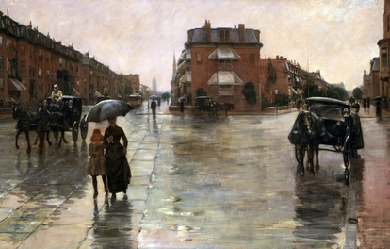
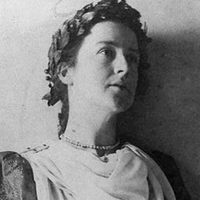
Louise Imogen Guiney (January 7, 1861– November 2, 1920) was an American poet, essayist and editor, born in Roxbury, Massachusetts. The daughter of Gen. Patrick R. Guiney, an Irish-born American Civil War officer and lawyer, and Jeannette Margaret Doyle, she was educated at a convent school in Providence, Rhode Island, from which she graduated in 1879. Over the next 20 years, she worked at various jobs, including serving as a postmistress and working as a cataloger at the Boston Public Library.

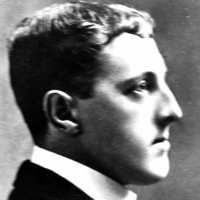
Norman Rowland Gale (4 March 1862– 7 October 1942) was a poet, story-teller and reviewer, who published many books over a period of nearly fifty years. His best-known poem is probably The Country Faith, which is in the Oxford Book of English Verse. Publications * A Country Muse (2 vols.), 1892 * Orchard Songs, 1893 * A June Romance, 1894 * All Expenses Paid, 1895 * Cricket Songs, 1894 * Songs for Little People, 1896 * (ed.) Poems by John Clare, 1901 * Barty’s Star, 1903 * More Cricket Songs, 1905 * A Book of Quatrains, 1909 * Song in September, 1912 * Solitude, 1913 * Collected Poems, 1914 * The Candid Cuckoo, 1918 * A Merry-go-Round of Song, 1919 * Verse in Bloom, 1925 * A Flight of Fancies, 1926 * Messrs Bat and Ball, 1930 * Close of Play, 1936 * Remembrances, 1937 * Love-in-a-Mist, 1939 References Wikipedia—https://en.wikipedia.org/wiki/Norman_Gale

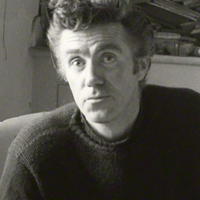
William Sydney Graham (19 November 1918– 9 January 1986) was a Scottish poet who is often associated with Dylan Thomas and the neo-romantic group of poets. Graham’s poetry was mostly overlooked in his lifetime but, partly due to the support of Harold Pinter, his work has enjoyed a revival in recent years. He was represented in the second edition of the Penguin Book of Contemporary Verse (Harmondsworth, UK, 1962) and the Anthology of Twentieth-Century British and Irish Poetry (Oxford University Press, 2001). Early life and work Graham was born in Greenock. In 1932, he left school to become an apprentice draughtsman and then studied structural engineering at Stow College, Glasgow. He was awarded a bursary to study literature for a year at Newbattle Abbey College in 1938. Graham spent the war years working at a number of jobs in Scotland and Ireland before moving to Cornwall in 1944. His first book, Cage Without Grievance was published in 1942. Graham and the neo-romantics The 1940s were prolific years for Graham, and he published four more books during that decade. These were The Seven Journeys (1944)' 2ND Poems (1945), The Voyages of Alfred Wallis (1948) and The White Threshold (1949). The style of these early poems led critics to see Graham as part of the neo-romantic group that included Dylan Thomas and George Barker. The affinities between these three poets derive from a common interest in poets like Gerard Manley Hopkins, Arthur Rimbaud and Hart Crane, and, in the cases of Thomas and Graham, a taste for the Bohemian lifestyle of the London literary scene. In 1947, Graham received the Atlantic Award for Literature, and lectured at New York University whilst spending a year on a reading touring of the United States. He moved to London to be nearer the hub of that Bohemian world. Here he came into contact with T. S. Eliot, then editor of Faber and Faber who published The White Threshold and who were to remain Graham’s publishers for the rest of his life. The Nightfishing and legacy In 1954, Graham returned to Cornwall to live near the St. Ives artists colony. Here he became friendly with several of the resident painters, including Bryan Wynter and Roger Hilton. The following year, Faber and Faber published his The Nightfishing, a book whose title poem marked a dramatic change in Graham’s poetry. The poem moved on from his earlier style and moved away from the neo-romantic/apocalyptic tag. Unfortunately for the poet, the poem’s appearance coincided with the rise of the Movement with their open hostility to the neo-romantics, and, despite the support of Eliot and Hugh MacDiarmid, the book was neither a critical nor a popular success. It was to be fifteen years before Graham published another book, Malcolm Mooney’s Land (1970). This, and his last book, “Implements In Their Places” are truly original and enduring poetic achievements, for which Graham is slowly coming to be recognised. For many years, he had been living in semi-poverty on his income as a writer, but in 1974 he received a Civil List pension of £500 per year. Perhaps because of this alleviation of his financial circumstances, Graham began to publish with more frequency, with Implements in their Places (1977), Collected Poems 1942–1977 (1979) and an American-published Selected Poems (1980). He died in Madron, Cornwall in 1986. His last collection Aimed at Nobody was published posthumously in 1993 and a book of Uncollected Poems appeared in 1990. Faber brought out a new Selected Poems in 1996. The Nightfisherman: Selected Letters was published in 1999 and New Collected Poems in 2005. All Graham’s poems have a location, a plot and setting (or narrative) as Graham insisted ‘the first act of engagement of reader and poem was in reading it aloud. This tested the syntax, pace and tone of poem and reader ’. Posthumous publication activity indicates, Graham’s reputation has grown in recent years. Some might argue this is partly due to Harold Pinter’s often-expressed enthusiasm for the poet, or attribute his increasing recognition to the widespread advocacy of poets associated with the British Poetry Revival. However Graham’s work was represented in the anthology Conductors of Chaos (1996) by a selection introduced by the poet and critic Tony Lopez, who also wrote a book-length study, The Poetry of W. S. Graham (1989). Marriage, death and recognition He married another poet, Agnes Kilpatrick Dunsmuir (1909–1999), known as “Nessie Dunsmuir”. He died on 9 January 1986. Copyright in Graham’s works is held by his daughter, Rosalind Mudaliar. In 2006, 20 years after his death, memorial plaques were unveiled in Fore Street, Madron where he spent his final years, and at his birthplace, 1 Hope Street, Greenock. Bibliography * Cage without Grievance, Parton Press, 1942 * The Seven Journeys, William MacLellan, 1944 * 2ND Poems, Nicholson and Watson, 1945 * The White Threshold, Faber and Faber, 1949 * The Nightfishing, Faber and Faber, 1955 * Malcolm Mooney’s Land, Faber and Faber, 1970 * Penguin Modern Poets 17, David Gascoyne, W. S. Graham, Kathleen Raine, Penguin Books, 1970 * Implements in their Places, Faber and Faber, 1977 * Collected Poems, 1942-1977, Faber and Faber, 1979 * Selected Poems, Ecco Press, 1980 * Uncollected Poems, Greville Press, 1990 * Aimed at Nobody: Poems from Notebooks, ed. Margaret Blackwood and Robin Skelton, Faber and Faber, 1993 * Selected Poems, Faber and Faber, 1996 * W.S. Graham Selected by Nessie Dunsmuir, Greville Press, 1998 * The Night Fisherman: Selected Letters of W. S. Graham, ed. Michael and Margaret Snow, Carcanet, 1999 * New Collected Poems, ed. Matthew Francis, Faber and Faber, 2004 * Approaches to How They Behave, Donut Press, 2009 * Les Dialogues obscurs / The Dark Dialogues, selected poems, bilingual book English-French, introduction Michael Snow, afterword Paul Stubbs, Black Herald Press, 2013 References Wikipedia—https://en.wikipedia.org/wiki/W._S._Graham
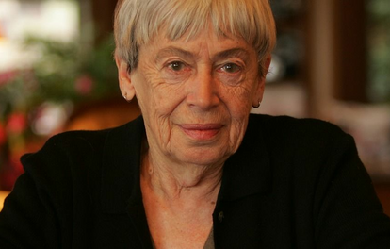
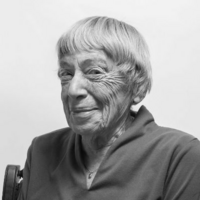
Ursula Kroeber Le Guin (October 21, 1929 – January 22, 2018) was an American novelist. She worked mainly in the genres of fantasy and science fiction. She also authored children’s books, short stories, poetry, and essays. Her writing was first published in the 1960s and often depicted futuristic or imaginary alternative worlds in politics, the natural environment, gender, religion, sexuality, and ethnography. In 2016, The New York Times described her as “America’s greatest living science fiction writer”, although she said that she would prefer to be known as an “American novelist”. She influenced Booker Prize winners and other writers, such as Salman Rushdie and David Mitchell, and science fiction and fantasy writers including Neil Gaiman and Iain Banks. She won the Hugo Award, Nebula Award, Locus Award, and World Fantasy Award, each more than once. In 2014, she was awarded the National Book Foundation Medal for Distinguished Contribution to American Letters. In 2003, she was made a Grandmaster of Science Fiction, one of a few women writers to take the top honor in the genre. Life Birth and family Ursula Kroeber was the daughter of anthropologist Alfred Louis Kroeber of the University of California, Berkeley, and writer Theodora Kracaw. Childhood and education Ursula and her three older brothers, Clifton, Theodore, and Karl Kroeber, were encouraged to read and were exposed to their parents’ dynamic friend group, which included Native Americans and Robert Oppenheimer, who was later to become in part a model for her hero in The Dispossessed. Le Guin stated that, in retrospect, she was grateful for the ease and happiness of her upbringing. The encouraging environment fostered Le Guin’s interest in literature; her first fantasy story was written at age 9, her first science fiction story submitted for publication in the magazine Astounding Science Fiction at age 11. The family spent the academic year in Berkeley, retreating in the summers to “Kishamish” in Napa Valley, "an old, tumble-down ranch... [and] a gathering place for scientists, writers, students, and California Indians. Even though I didn’t pay much attention, I heard a lot of interesting, grown-up conversation." She was interested in biology and poetry, but found math difficult. Le Guin attended Berkeley High School. She received her B.A. (Phi Beta Kappa) in Renaissance French and Italian literature from Radcliffe College in 1951, and M.A. in French and Italian literature from Columbia University in 1952. Soon after, Le Guin began her Ph.D. work and won a Fulbright grant to continue her studies in France from 1953 to 1954. Marriage and family In 1953, while traveling to France aboard the Queen Mary, Le Guin met her future husband, historian Charles Le Guin. They married later that year in Paris. After marrying, Le Guin chose not to continue her doctoral studies of the poet Jean Lemaire de Belges. The couple returned to the United States so that he could pursue his Ph.D. at Emory University. During this time, she worked as a secretary and taught French at the university level. Their first child, Elisabeth (1957), was born in Moscow, Idaho, where Charles taught. In 1958 the Le Guins moved to Portland, Oregon, where their daughter Caroline (1959) was born, and where they lived thereafter. Charles is Emeritus Professor of History at Portland State University. During this time, she continued to make time for writing in addition to maintaining her family life. In 1964, her third child, Theodore, was born. Death Le Guin died on January 22, 2018, at her home in Portland, Oregon; her son stated that she had been in poor health for several months. Her New York Times obituary called her “the immensely popular author who brought literary depth and a tough-minded feminist sensibility to science fiction and fantasy with books like The Left Hand of Darkness and the Earthsea series”. Writing career Le Guin became interested in literature quite early. At age 11, she submitted her first story to the magazine Astounding Science Fiction. Despite being rejected, she continued writing but did not attempt to publish for the next ten years. From 1951 to 1961 she wrote five novels, which publishers rejected, because they seemed inaccessible. She also wrote poetry during this time, including Wild Angels (1975). Her earliest writings, some of which she adapted in Orsinian Tales and Malafrena, were non-fantastic stories set in the imaginary country of Orsinia. Searching for a way to express her interests, she returned to her early interest in science fiction; in the early 1960s her work began to be published regularly. One Orsinian Tale was published in the Summer 1961 issue of The Western Humanities Review and three of her stories appeared in 1962 and 1963 numbers of Fantastic Stories of Imagination, a monthly edited by Cele Goldsmith. Goldsmith also edited Amazing Stories, which ran two of Le Guin’s stories in 1964, including the first “Hainish” story. In 1964 the short story “The Word of Unbinding” was published. This was the first of the Earthsea fantasy series, which includes six books and eight short stories. The three linked young adult novels beginning with A Wizard of Earthsea (1968), The Tombs of Atuan (1970), and The Farthest Shore (1972), sometimes referred to as The Earthsea Trilogy, in later years would be joined by the books Tehanu, Tales from Earthsea and The Other Wind. Le Guin received wide recognition for her novel The Left Hand of Darkness, which won the Hugo and Nebula awards in 1970. Her subsequent novel The Dispossessed made her the first person to win both the Hugo and Nebula Awards for Best Novel twice for the same two books. In later years, Le Guin worked in film and audio. She contributed to The Lathe of Heaven, a 1979 PBS film based on her novel of the same name. In 1985 she collaborated with avant-garde composer David Bedford on the libretto of Rigel 9, a space opera. In May 1983 she delivered a well-received commencement address entitled “A Left-Handed Commencement Address” at Mills College, Oakland, California. “A Left-Handed Commencement Address” is included in her nonfiction collection Dancing at the Edge of the World. In 1984, Le Guin was part of a group along with Ken Kesey, Brian Booth, and William Stafford that founded the Oregon Institute of Literary Arts, which is now known as Literary Arts in Portland. In December 2009, Le Guin resigned from the Authors Guild in protest over its endorsement of Google Books, Google’s book digitization project. “You decided to deal with the devil”, she wrote in her resignation letter. “There are principles involved, above all the whole concept of copyright; and these you have seen fit to abandon to a corporation, on their terms, without a struggle.” (See Authors Guild, Inc. v. Google, Inc..) Influences Le Guin was influenced by fantasy writers, including J. R. R. Tolkien, by science fiction writers, including Philip K. Dick (who was in her high school class, though they did not know each other), by central figures of Western literature such as Leo Tolstoy, Virgil and the Brontë sisters, by feminist writers such as Virginia Woolf, by children’s literature such as Alice in Wonderland, The Wind in the Willows, The Jungle Book, by Norse mythology, and by books from the Eastern tradition such as the Tao Te Ching. When asked about her influences, she replied: Once I learned to read, I read everything. I read all the famous fantasies – Alice in Wonderland, and Wind in the Willows, and Kipling. I adored Kipling’s Jungle Book. And then when I got older I found Lord Dunsany. He opened up a whole new world – the world of pure fantasy. And... Worm Ouroboros. Again, pure fantasy. Very, very fattening. And then my brother and I blundered into science fiction when I was 11 or 12. Early Asimov, things like that. But that didn’t have too much effect on me. It wasn’t until I came back to science fiction and discovered Sturgeon – but particularly Cordwainer Smith.... I read the story “Alpha Ralpha Boulevard”, and it just made me go, “Wow! This stuff is so beautiful, and so strange, and I want to do something like that.” In the mid-1950s, she read J. R. R. Tolkien’s The Lord of the Rings, which had an enormous impact on her. But rather than making her want to follow in Tolkien’s footsteps, it simply showed her what was possible with the fantasy genre. Themes Le Guin exploits the creative flexibility of the science fiction and fantasy genres to undertake thorough explorations of dimensions of both social and psychological identity and of broader cultural and social structures. In doing so, she draws on sociology, anthropology, and psychology, leading some critics to categorize her work as soft science fiction. She objected to this classification of her writing, arguing the term is divisive and implies a narrow view of what constitutes valid science fiction. Underlying ideas of anarchism and environmentalism also make repeated appearances throughout Le Guin’s work. In 2014 Le Guin said about the appeal of contemplating possible futures in science fiction: anything at all can be said to happen [in the future] without fear of contradiction from a native. The future is a safe, sterile laboratory for trying out ideas in, a means of thinking about reality, a method. Sociology, anthropology and psychology Being so thoroughly informed by social science perspectives on identity and society, Le Guin treats race and gender quite deliberately. The majority of her main characters are people of color, a choice made to reflect the non-white majority of humans, and one to which she attributes the frequent lack of character illustrations on her book covers. Her writing often makes use of alien (i.e., human but non-Terran) cultures to examine structural characteristics of human culture and society and their impact on the individual. This prominent theme of cultural interaction is most likely rooted in the fact that Le Guin grew up in a household of anthropologists where she was surrounded by the remarkable case of Ishi – a Native American acclaimed in his time as the “last wild Indian” – and his interaction with the white man’s world. Le Guin’s father was director of the University of California Museum of Anthropology, where Ishi was studied and worked as a research assistant. Her mother wrote the bestseller Ishi in Two Worlds. Similar elements are echoed through many of Le Guin’s stories – from Planet of Exile and City of Illusions to The Word for World Is Forest and The Dispossessed. Le Guin’s writing notably employs the ordinary actions and transactions of everyday life, clarifying how these daily activities embed individuals in a context of relation to the physical world and to one another. For example, the engagement of the main characters with the everyday business of looking after animals, tending gardens and doing domestic chores is central to the novel Tehanu. Themes of Jungian psychology also are prominent in her writing. For example Le Guin’s Hainish Cycle, a series of novels encompassing a loose collection of societies, of various related human species, that exist largely in isolation from one another, providing the setting for her explorations of intercultural encounter. The Left Hand of Darkness, The Dispossessed and The Telling all consider the consequences of contact between different worlds and cultures. Unlike those in much mainstream science fiction, Hainish Cycle civilization does not possess reliable human faster-than-light travel, but does have technology for instantaneous communication. The social and cultural impact of the arrival of Ekumen envoys (known as “mobiles”) on remote planets, and the culture shock that the envoys experience, constitute major themes of The Left Hand of Darkness. Le Guin’s concept has been borrowed explicitly by several other well-known authors, to the extent of using the name of the communication device (the “ansible”). The Left Hand of Darkness is particularly noted for the way she explores social, cultural, and personal consequences of sexual identity through a novel involving a human’s encounter with an intermittently androgynous race. In addition to androgyny, Le Guin’s focus on sexuality breaks down normative gender roles. “Solitude”, one of the stories in The Birthday of the World: and Other Stories follows a young girl, more adventurous and daring than her older brother, into a world dominated by strong, territorial women. In Paradises Lost, the people of a spaceship several generations into the voyage to a new colony-world are saved by a female interstellar navigator, an archetypal role typically reserved for men. Environmentalism Elizabeth McDowell states in her 1992 master’s thesis that Le Guin "identif[ies] the present dominant socio-political American system as problematic and destructive to the health and life of the natural world, humanity, and their interrelations". This idea recurs in several of Le Guin’s works, most notably The Left Hand of Darkness (1969), The Word for World Is Forest (1972), The Dispossessed (1974), The Eye of the Heron (1978), Always Coming Home (1985), and “Buffalo Gals, Won’t You Come Out Tonight” (1987). All of these works center on ideas regarding socio-political organization and value-system experiments in both utopias and dystopias. As McDowell explains, “Although many of Le Guin’s works are exercises in the fantastic imagination, they are equally exercises of the political imagination.” In addition to her fiction, Le Guin’s book Out Here: Poems and Images from Steens Mountain Country, a collaboration with artist Roger Dorband, is a clear environmental testament to the natural beauty of that area of Eastern Oregon. Le Guin also wrote several works of poetry and nonfiction on Mount St. Helens following the 1980 eruption. These works explore local stories and discussions surrounding the eruption event in conjunction with Le Guin’s own perspective as it relates to viewing the eruption and mountain from her home in Portland, as well as her various visits into the blast zone. Anarchism and Taoism Le Guin’s feelings towards anarchism were closely tied to her Taoist beliefs and both ideas appear in her work. “Taoism and Anarchism fit together in some very interesting ways and I’ve been a Taoist ever since I learned what it was.” She participated in numerous peace marches and although she did not call herself an anarchist, since she did not live the lifestyle, she did feel that “Democracy is good but it isn’t the only way to achieve justice and a fair share.” Le Guin said: “The Dispossessed is an Anarchist utopian novel. Its ideas come from the Pacifist Anarchist tradition – Kropotkin etc. So did some of the ideas of the so-called counterculture of the sixties and seventies.” She also said that anarchism “is a necessary ideal at the very least. It is an ideal without which we couldn’t go on. If you are asking me is anarchism at this point a practical movement, well, then you get in the question of where you try to do it and who’s living on your boundary?” Le Guin has been credited with helping to popularize anarchism as her work "rescues anarchism from the cultural ghetto to which it has been consigned [and] introduces the anarchist vision... into the mainstream of intellectual discourse". Indeed her works were influential in developing a new anarchist way of thinking; a postmodern way that is more adaptable and looks at/addresses a broader range of concerns. Adaptations of her work Few of Le Guin’s major works have been adapted for film or television. Her 1971 novel The Lathe of Heaven has been adapted twice: The first adaptation was made in 1979 by WNET Channel 13 in New York, with her own participation, and the second adaptation was made in 2002 by the A&E Network. In a 2008 interview, she said she considers the 1979 adaptation as “the only good adaptation to film” of her work to date. In the early 1980s animator and director Hayao Miyazaki asked permission to create an animated adaptation of Earthsea. However, Le Guin, who was unfamiliar with his work and anime in general, turned down the offer. Years later, after seeing My Neighbor Totoro, she reconsidered her refusal, believing that if anyone should be allowed to direct an Earthsea film, it should be Hayao Miyazaki. The third and fourth Earthsea books were used as the basis of the 2006 animated film Tales from Earthsea (ゲド戦記, Gedo Senki). The film, however, was directed by Miyazaki’s son, Gorō, rather than Hayao Miyazaki himself, which disappointed Le Guin. While she was positive about the aesthetic of the film, writing that “much of it was beautiful”, she took great issue with its re-imagining of the moral sense of the books and greater focus on physical violence. "[E]vil has been comfortably externalized in a villain", Le Guin writes, "the wizard Kumo/Cob, who can simply be killed, thus solving all problems. In modern fantasy (literary or governmental), killing people is the usual solution to the so-called war between good and evil. My books are not conceived in terms of such a war, and offer no simple answers to simplistic questions.” In 1987, the CBC Radio anthology program Vanishing Point adapted The Dispossessed into a series of six 30-minute episodes, and at an unspecified date The Word for World Is Forest as a series of three 30-minute episodes. In 1995, Chicago’s Lifeline Theatre presented its adaptation of The Left Hand of Darkness. Reviewer Jack Helbig at the Chicago Reader wrote that the “adaptation is intelligent and well crafted but ultimately unsatisfying”, in large measure because it is extremely difficult to compress a complex 300-page novel into a two-hour stage presentation. In 2004 the Sci Fi Channel adapted the first two books of the Earthsea trilogy as the miniseries Legend of Earthsea. Le Guin was highly critical of the adaptation, calling it a “far cry from the Earthsea I envisioned”, objecting both to the use of white actors for her red, brown, or black-skinned characters, and to the way she was “cut out of the process”. Her novella, Paradises Lost, published in The Birthday of the World: and Other Stories, was adapted into an opera by the American composer Stephen Andrew Taylor and Canadian librettist Marcia Johnson. The opera premiered April 26, 2012 at the Krannert Center for the Performing Arts on the campus of the University of Illinois. In 2013, the Portland Playhouse and Hand2Mouth Theatre produced a stage adaptation of The Left Hand of Darkness, directed and adapted by Jonathan Walters, with text adapted by John Schmor. The play opened May 2, 2013, and ran until June 16, 2013, in Portland, Oregon. In 2015, the BBC commissioned radio adaptations of The Left Hand of Darkness and the first three Earthsea novels. The Left Hand of Darkness was aired as two hour-long episodes, and Earthsea as six half-hour episodes. In early 2017 Le Guin’s award winning novel The Left Hand of Darkness was picked up by Critical Content, a production company formerly known as Relativity Television, to be produced as a television limited series. Le Guin was to serve as a consulting producer on the project.


I have had a hard life, music and poetry have always been my out to get away from the world. I have been writing since i was twelve. I didn't realize my talent until freshman year of high school when my teacher suggested that i enter in a contest. My favorite form of poetry is Romanticism. My favorite poets are Longfellow, Poe, and Frost. My favorite novelist is Stephen King. I have a passion for nature and black and white movies. I would love to be a writer, however, I am study to become a special needs teacher.
My name is emma giddings. I am a horrorjunkie, and I love music. I was diagnosed with panic disorder, and it has been an inspiration to a lot of my writing, seeing as it made me quite depressed. I am very dark, and I love that about myself. I also love dark people, with a morbid sense of humor. I used to self mutilate quite a bit. It seemed like an addiction, and sometimes it seems like I'm about to relapse. It is one of my major struggles. Yet, I tell people I am over it. I drink maybe more than I should. I'm still trying to find myself. Writing helps a lot with this. I feel less alone when I write... I feel like someone is listening. Like someone understands. I'm not a sad person per say. Just dark. I don't hate my life...but like everyone, I think it could be better. I've started to hate my body. My idols include: Stephen King, Joan Jett, and Dee Snider. I love classic rock, punk, and thrash metal. I hope people read my poems...and feel something...and if they do, I hope they let me know.







.jpg)
